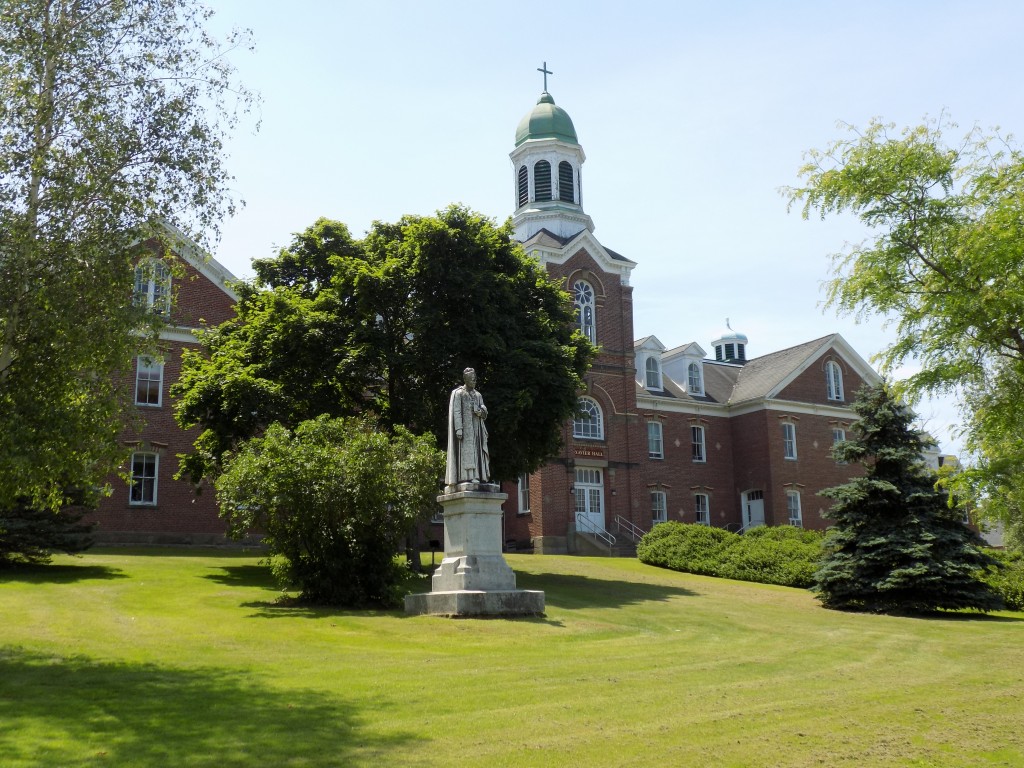Nova Scotia and the North Country have something in common
Colleges in small towns do more than give high school graduates a place to study and party for three or four years before becoming serious adults (whatever that means). They’re major sources of economic development, and contribute to a lively base for local intellectual and cultural activity.
I recently spent some time for both research and recreation in Antigonish, a town of 4,500 people in central Nova Scotia. Surrounded by small, forested mountains, rolling farmland, and the sublime shore of the Northumberland Strait, half of the town’s populated territory is dominated by St. Francis Xavier University (usually just called St. FX), giving Antigonish an appearance and culture not too unlike Canton and Potsdam.

The Cape George Lighthouse by the Northumberland Strait near Antigonish, Nova Scotia. Photo by James Morgan
Nova Scotia, has the oldest population in Canada by average at 43 years. The national average is 41. Young people aren’t staying in the small towns. Most move to Halifax or other parts of Canada to work and study, either temporarily or for good. I have several cousins from Nova Scotia who followed that path. Antigonish slightly bucks this trend with an average age of 42. Could this be a result of over 5,000 students spending eight months of the year in town? Students from local families stay and study, and young professors move to town. Graduates who like the local lifestyle may stay and start families. Could colleges and their economic benefits be the reason for similar numbers in St. Lawrence County? According to some recent census figures, the average age of a New Yorker is 38 years. I couldn’t find averages but the median age is 37 in St. Lawrence County, 27 in Canton and 22 Potsdam.

Ray Hanley on the phone at Little Christo’s. Michael Hanley is in the background talking with a member of the serving staff. Photo by James Morgan
Little Christo’s Pizzeria and Mediterranean Eatery on Antigonish’s Main Street is a good example of the economic and intellectual spinoff of St. FX. The meal I had at Little Christo’s was one of the highlights of my trip. This top-rated restaurant is owned by chef extraordinaire Ray Hanley and his son Michael, a student of philosophy and history at St. FX. Michael also tends to customer service with ease and lots of energy. I asked him why he was pursuing a liberal arts degree and not studying business. He said he wanted to learn about and understand the wider world and that after three years of co-owning a business, he feels like he’s learned as much or more about entrepreneurship as business students do from textbooks.
St. FX is a Roman Catholic university founded in 1853 but a big part of its legacy is in the social development Antigonish Movement, dating from the 1920s. It was an effort to strengthen communities and the economy in Canada’s Maritime Provinces through the creation of co-operatives, credit unions, and community ownership of local business. Father Moses Coady and his cousin, fellow priest Father Jimmy Tompkins were its leaders.
Today, the Coady International Institute at the university continues the work of the Antigonish Movement, bringing cooperative ownership and credit unions to developing countries. In my opinion, that same spirit of community ownership and cooperation exists in the North Country. It’s evident through the strong support for NCPR. Traditional Arts in Upstate New York (TAUNY) helps local artisans and performers market their talent and so do weekly farmer’s markets. Credit unions have branches throughout the region. It’s this sort of social and economic development that intellectual nerve centers like colleges foster in a community. The demographic figures also show that these institutions help keep young people in—or attract them to small towns.
This conclusion may be counter-intuitive, given the loss of young people to urban communities. Nonetheless, colleges play a key role in attracting and retaining a younger population in small towns, across the North Country and Nova Scotia.
Tags: canada, colleges, nova scotia, small towns, travel







.jpg)

We were also in Antigonish for a family wedding and had a magnificient lunch at Little Cristo’s, Enjoyed it so much that we returned a few days later for another meal. Friendly service and excellent food